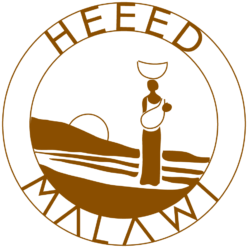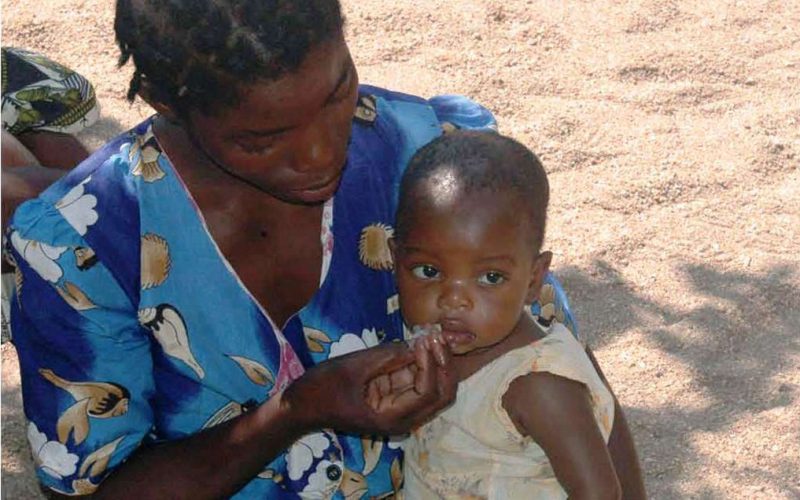
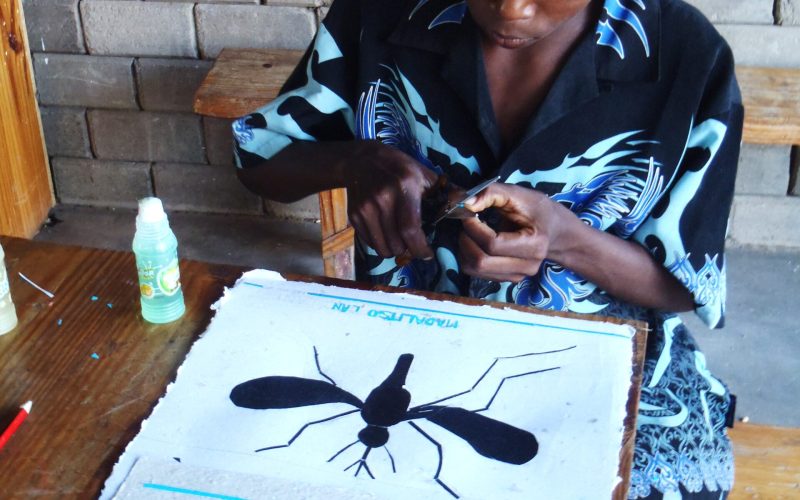
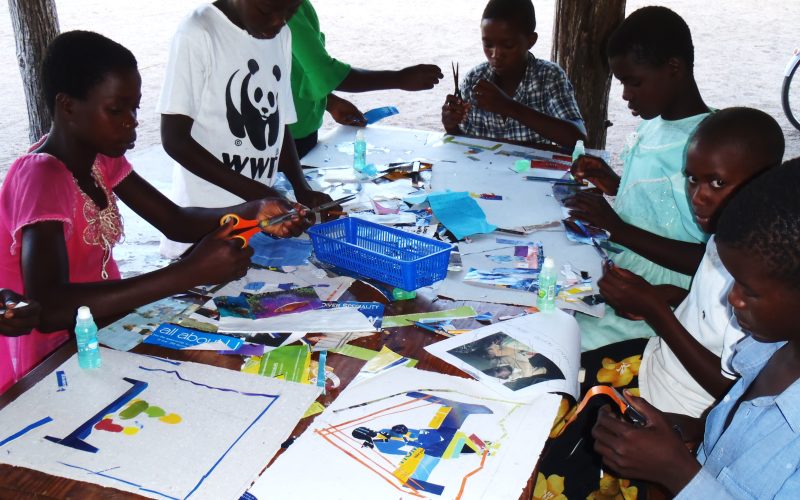
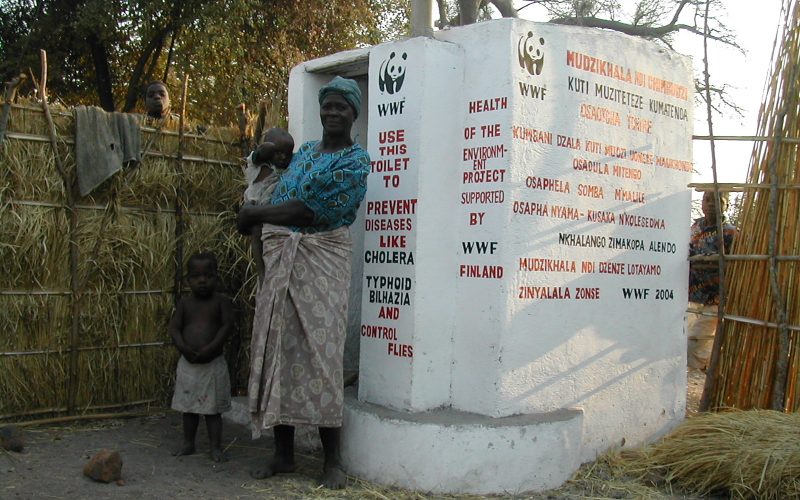
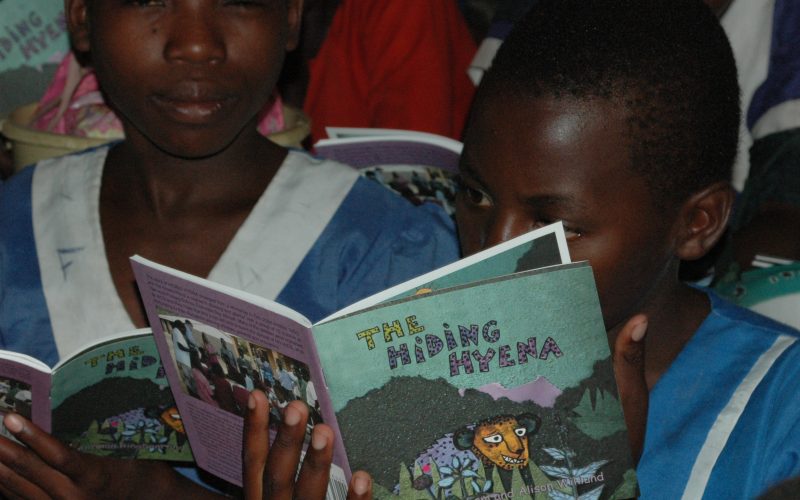
Challenges: Poor sanitation, diseases such as malaria, cholera and bilharzia, the condition of HIV/AIDS and malnutrition – that all impact on the environment.
HEEED solutions
Malaria: distribution of mosquito nets when funding permits, malaria awareness education and art programme
Bilharzia(schistosomiasis): increase awareness of connection with the snail-eating fishes and the need to conserve these biological control agents. Monitor the presence/absence of disease-carrying snails outside Chembe and nearby tourist lodges.
Sanitation. Reduce disease and bilharzia by providing Blair toilets, when funds permit.
HIV/AIDS increase awareness of these conditions through pamphlets videos and books, an orphan-feeding programme cooking demonstrations related to nutritious diets and after-dark educational video shows (Panda Garden, Chembe).
Malnutrition: with the current challenges of global climate change and increased drought conditions in Southern Africa, HEEED is encouraging the HEEED staff to grow cassava in their gardens at the NYCOM-HEEED CENTRE. Unlike the Malawian staple, maize (which was introduced to Malawi by the Portuguese 250 years ago!), cassava is drought-resistant and very nutritious. HEEED staff family members are encouraged to participate and thus lead by example – to change the Chembe community diet!
